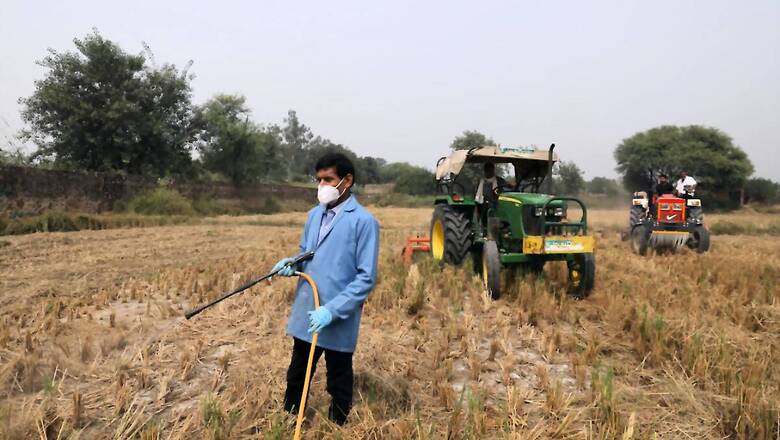
views
Expecting others to do the right thing is always a losing expectation. People want everybody else to keep the city clean and they believe that everybody else should not honk, everybody else is wasting and polluting and they are creating the problem, not them. This expectation always meets with frustration, hence smart politicians sometime harness it and direct it to people not like ‘them’.
The nip in the Delhi air will soon turn into chilly winds and smog will smother the city with pollution. Whether it will lead to an increase or decrease in the Covid-19 infection, which is known to attack the lungs, only time will tell. The fashionable, rich Delhi dwellers who need an SUV to travel 500 meters to a market in Delhi, will explain to you in great earnestness that it is those farmers who are causing the pollution. By burning the rice stubble in the fields and it is choking them and their children.
Their impassioned pleas crumble under data: transportation contributes 41 per cent, industry 18 per cent and windblown dust over 21 per cent. Yes, stubble burning exacerbates the situation by preventing dispersion, but the major contributors of pollution do not go away. Experts predict that vehicle ownership rate to grow at a staggering pace, from 22 cars per 1,000 people in 2018 to 175 cars per 1,000 people by 2040.
According to a study by Center of Science and Environment, stubble burning reached its peak in 2016 and since then it has been coming down every year, including in 2020. Punjab still has 5 to 8 times more active stubble burning hotspots as compared to Haryana. This means farmers have changed their behaviour and reduced stubble much more in Haryana than in Punjab.
Stubble burning results in smog, according to some, but it’s not so simple. Only if the stubble burning is concentrated, that is, a lot of farmers burn it on the same day and wind blows towards Delhi that it results in smog. If they disperse the stubble burning over several weeks, it may not actively contribute to the problem.
But the bigger question that remains unanswered is, why is the smog caused only in the city? Do the rural areas also get the same level smog, a high level of concentration of PMI 2.5 concentration in the air showing toxic pollution? There is no data for the pollution in rural areas where the stubble burning actually takes place and even the adjoining areas of Delhi which are rural.
If data is made available for the rural pollution, farmers can be told that their stubble burning is affecting the health of their own family and then they may make efforts to reduce the process. Instead, the state uses coercion, threats and fines to prevent it. The assumption among the policy makers is that the farmers are stupid, do not care for self-preservation and the only way to bring change is by threatening them. The government works through threats; it does not nudge change in behaviour, especially for people they don’t know. Or people that are not like them.
A farmer does not look like a policymaker or a citizen of Delhi, therefore it is easy to threaten and blame him. But pollution is not a smog issue. Pollution or its indicator PMI 2.5 builds up. There is always pollution in the air and it is called baseline pollution. Because of COVID-19 lockdown, factories, industry, construction activity, and even vehicular traffic came to a halt. This was a great time to do a study on baseline pollution in Delhi, and a scientist did it.
GufranBeig, scientist with the Indian Institute of Tropical Meteorology, along with DPCC, and the India Meteorological Department (IMD) analysed data from February 20 to April 14 and prepared base level of seven pollutants for PM10, PM2.5, NO2 and SO2 among others. They published their research on October 10.
During the lockdown period, pollution remained below the 40μg/m3 mark on most days and even touched 20μg/m3. On October 10, with the lockdown eased at 5 pm, it was 95μg/m3, almost five times above the baseline.
“The baseline levels of PM10 and PM2.5 were found to be 38μg/m3 (± 8) and 22μg/m3 (± 6) respectively. They found the baseline value of NO2 to be 8ppb (± 3), which is considered being very high,” states the research paper, published on October 10.
The high baseline figures show that stubble burning is not the only issue, Delhi can raise its baseline pollution by five times without the smog or the stubble burning. Smart politicians do not want to threaten Delhites with penalties, fines, or imprisonment to change their behaviour. They want Haryana and Punjab to threaten their citizens to change. This war against pollution seems to have become a war by urban dwellers against rural poor.
Read all the Latest News and Breaking News here
















Comments
0 comment